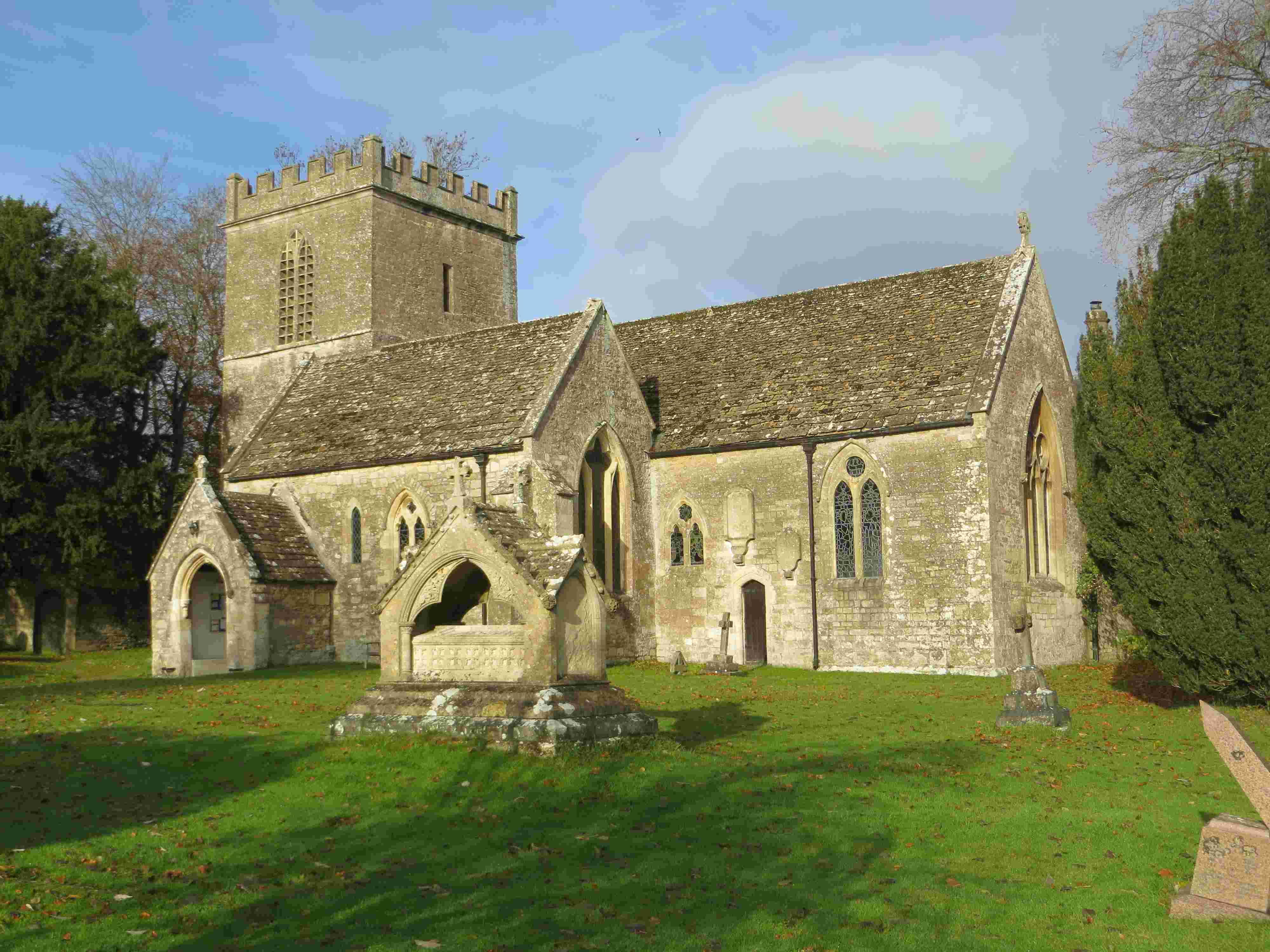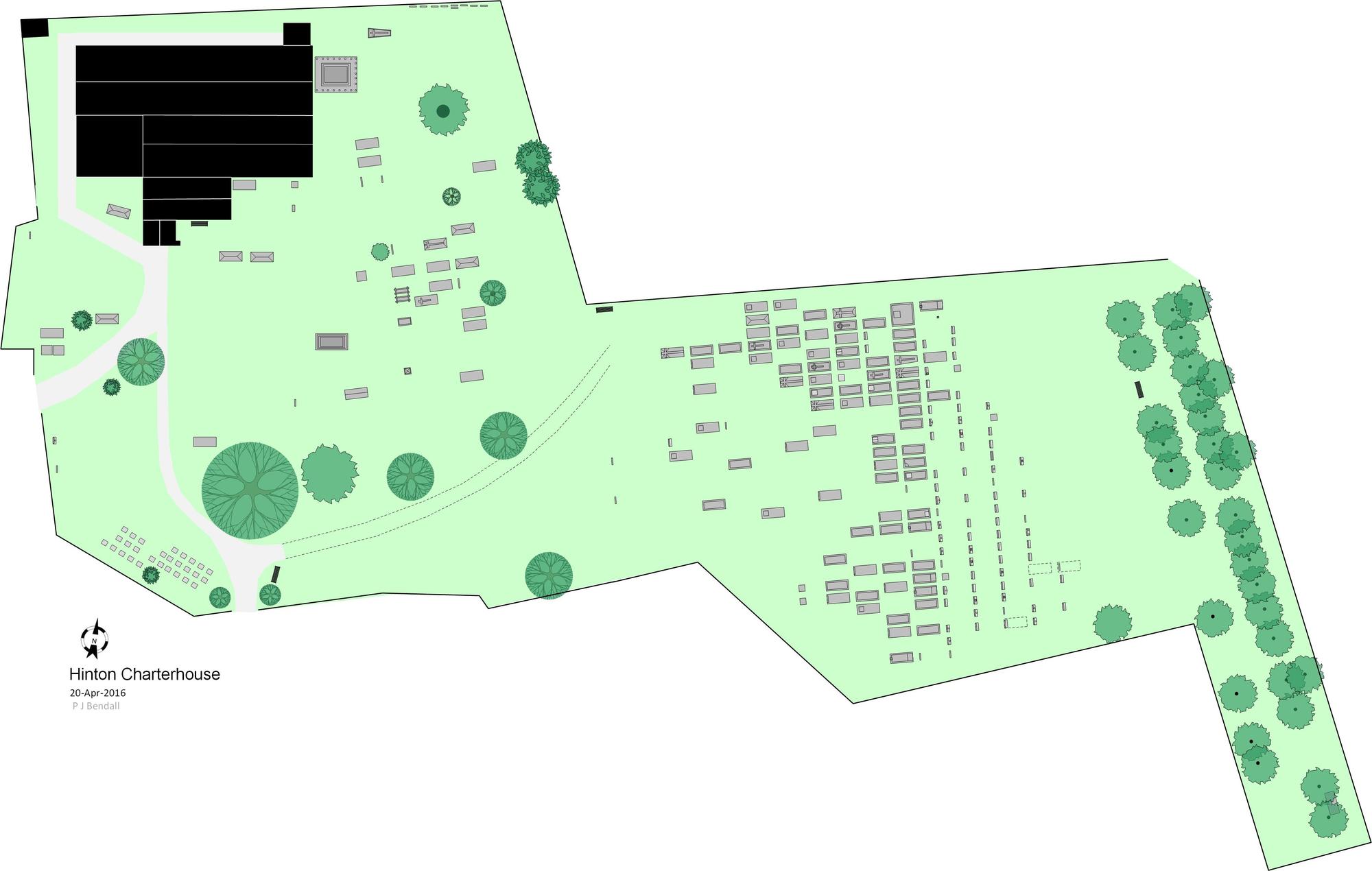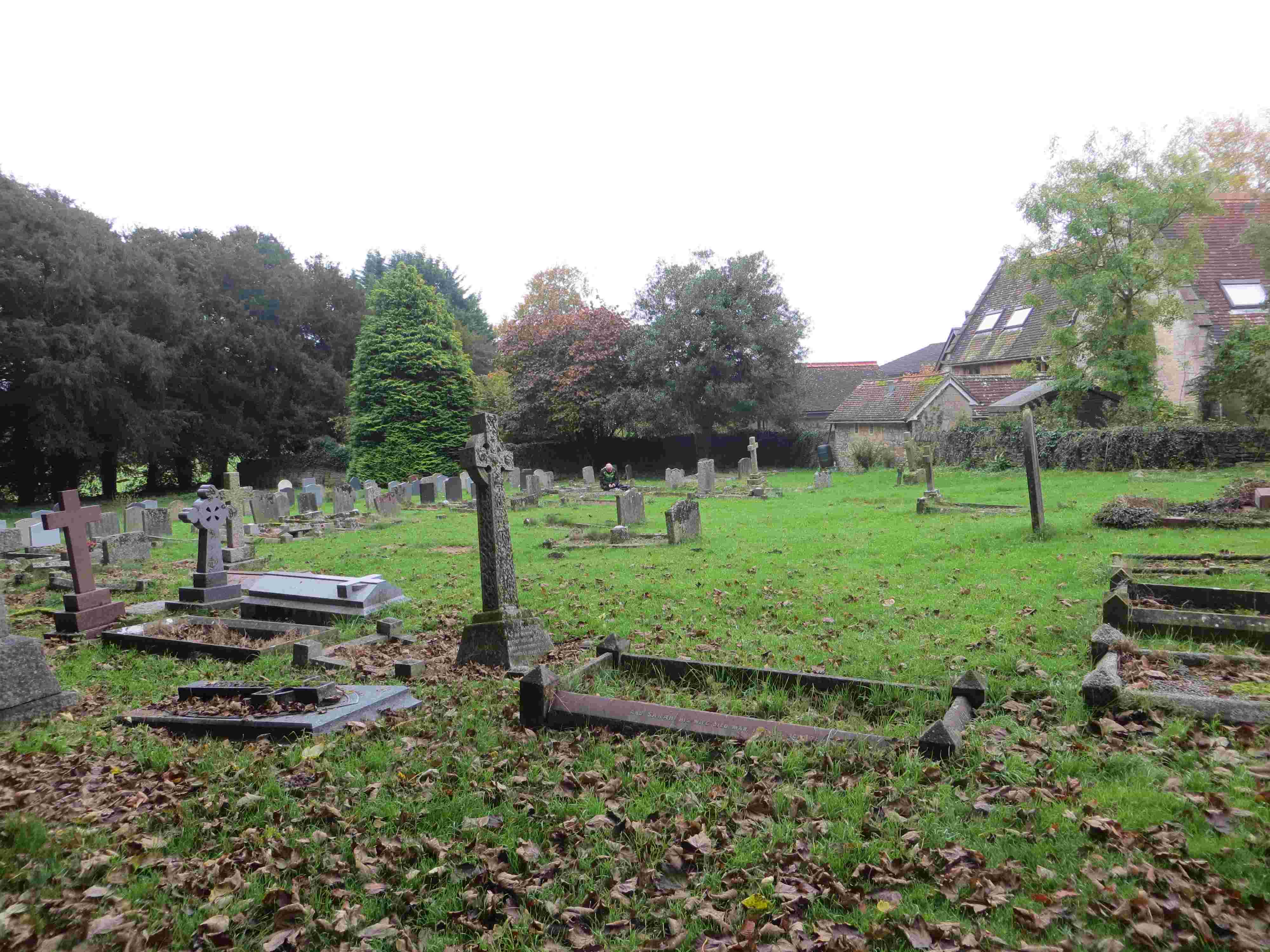
St John the Baptist, Hinton Charterhouse
The church of St John the Baptist is part of a joint benefice with St Peter’s, Freshford, and St Mary’s, Limpley Stoke within the archdeaconry of Bath. The village’s website gives a history of the building (http://www.hintoncharterhouse.com/st%20johns%20church.htm). The building is Grade II* listed by Historic England. The graveyard is south of the church with a new section in the eastern part of this area. The main part of the graveyard is only sparsely populated with memorials.
In 1840 while the Church of England was struggling with different factions, Rev Thomas Spencer, Perpetual Curate of Hinton Charterhouse published a pamphlet entitled Clerical Conformity and Church Property. In this, in a question & answer form, he inveighed against “the Puseyite clergy, who hold Roman Catholic doctrines with Protestant incomes. Secondly.- The fox-hunting, ball-going, and race-frequenting clergy, who hold no doctrines at all, but who receive the incomes of the Church”. A review of another of his publications which appeared in The Christian Remembrancer, Volume V (Jan-Jun 1843) condemned some of his views as ‘outrageous’ and questioned why he still had his post as a clergyman. In 1844 he wrote another pamphlet which objected to his parishioners contributing money for building churches. He died in London in 1853 and was buried at Hinton Charterhouse.
In 1849-50, Sir George Gilbert Scott, in addition to his numerous restorations in the Bath area and elsewhere in Somerset, carried out general repairs and a reseating to the church at Hinton Charterhouse.

Overall layout

The new section
From the Bath Chronicle of Thu 19 Dec 1895 p2:
CONSECRATION OF NEW CHURCHYARD,
On Wednesday morning, December the 11th, the Lord Bishop of Bath and Wells consecrated the ground which has been added to the Churchyard at Hinton Charterhouse. The new Piece, which is a little more than a quarter of an acre in extent, is the joint gift of the Vicar and Mr. E. T. D. Foxcroft, and was formerly an allotment garden. New allotments of an acre and a quarter have been provided by Mr. Foxcroft, close by, so that the parish is even better furnished with allotments than before. The act of consecration was preceded by Morning Prayer in the church at 11.30, when the Bishop occupied a canopied throne which had been erected in the sanctuary, and when the Bishop preached to numerous congregation. . . . After the service, the choir, and the clergy, the Lord Bishop, and the congregation, left the church in procession (headed by the processional cross), singing “Jesus lives,” and repaired to the ground which was to be consecrated. The ground was perambulated, whilst Psalms 49 and 115 were sung, and then the Bishop and the Clergy ascended a platform which had been erected in the middle of the ground for the concluding part of the service. Here the sentence of consecration was read and signed, and again the Bishop gave a short address. He urged that every reverent care should be taken of the churchyard, and specially asked that every monument which should be erected there should speak brightly of the Christian Hope and Faith. The Bishop gave his blessing, and as the hymn “O God our help in ages past,” was sung, the procession returned to the church. The singing outside was led by a cornet, very ably played by Mr. John Horler, of Wellow. On the return to the church the Bishop visited the choir vestry, and spoke kindly to the choir, thanking them for the very reverent service in which he said it had been a pleasure to him to take part.
Mr. Foxcroft entertained the Bishop and the Clergy and some others to luncheon after the ceremony was over.